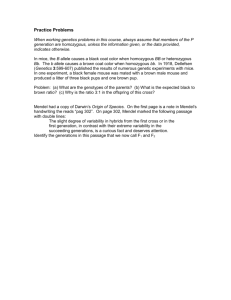24 Genetics
advertisement
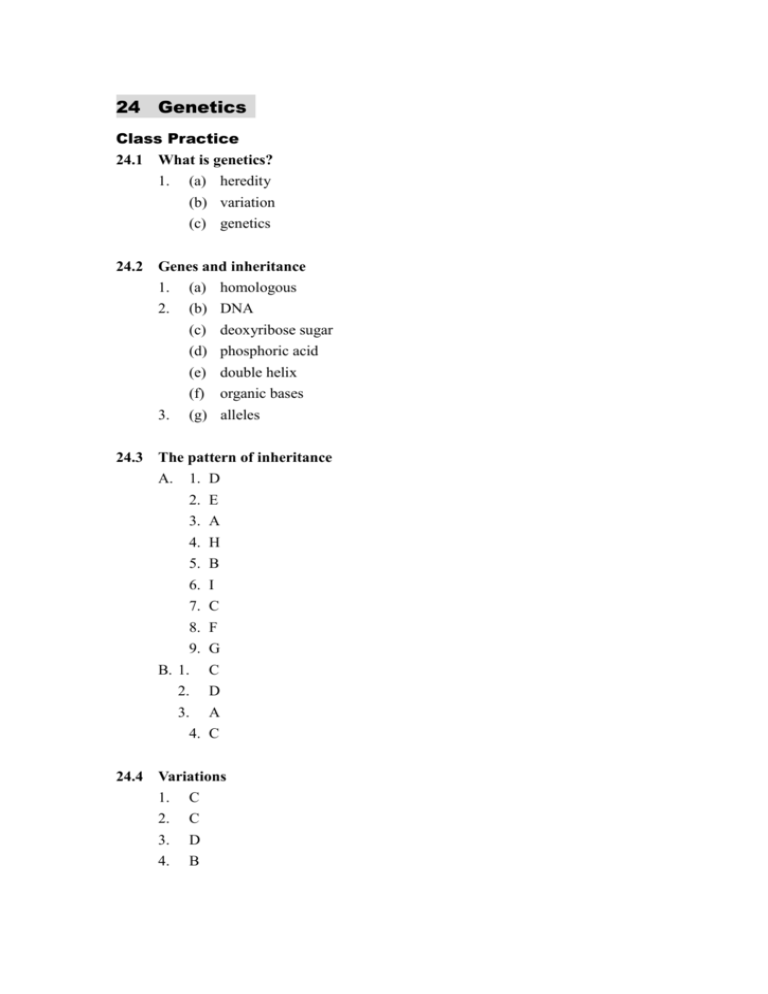
24 Genetics Class Practice 24.1 What is genetics? 1. (a) heredity (b) variation (c) genetics 24.2 Genes and inheritance 1. (a) homologous 2. (b) DNA (c) deoxyribose sugar (d) phosphoric acid (e) double helix 3. (f) organic bases (g) alleles 24.3 The pattern of inheritance A. 1. D 2. E 3. A 4. 5. 6. 7. 8. 9. B. 1. 2. 3. H B I C F G C D A 4. C 24.4 Variations 1. C 2. C 3. D 4. B 24.5 Inherited disorders in humans 1. D 2. A 24.6 Genetic engineering 1. F 2. F 3. T 4. F 1. 2. Genetic engineering is a technique of introducing new genes to an organism from other different organisms. Producing GM foods is one of the applications of genetic engineering. 4. Some of the vegetables that we eat every day are GM plants. Exam Practice A. Multiple Choice Questions 1. B 2. C 3. D 4. B 5. C 6. D 7. B 8. D 9. D 10. C 11. A 12. B B. Structure Questions 1. (a) black (b) black male horse – Bb; reddish-brown female horse – bb (c) (d) The theoretical ratio is based on probability. In other words, if an infinite number of offspring are produced, the actual ratio will be very close to the expected one. 2. (a) (P) Gg X gg (Q) Gg X Gg (R) gg X gg (S) GG X gg (T) GG X GG / Gg X GG (b) In cross (Q) Only the heterozygous grey offspring will produce white offspring when self-fertilised. Therefore, it is 2/3. (c) Cross it with a white one (gg). If all the offspring are grey, the offspring obtained from (Q) is homozygous. If white offspring appear, then it is heterozygous. (d) (i) 3. (ii) Phenotypic ratio grey : white = 3 : 1 Genotypic ratio GG : Gg : gg = 1 : 2 : 1 (a) Individual 11 does not have this trait and therefore he is homozygous. He has received one recessive allele from each of his parents (3 and 4). Individuals 3 and 4 both have a recessive allele. As they show the trait which is dominant, they must be heterozygous (Aa). (b) 3/4 4. C. (c) The theoretical ratio is based on probability. In other words, if an infinite number of offspring are produced, the actual ratio will be very close to the expected one. (a) environment (b) heredity (c) environment (d) heredity and environment Structured questions (a) Additional energy is required to produce fluorescence. The fish will be spotted more easily by predators. (c) Fish can swim. Once they escape to other places, nothing can be done to capture them.





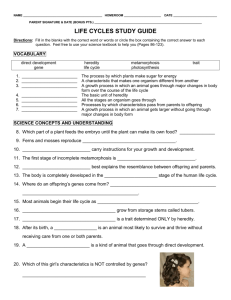

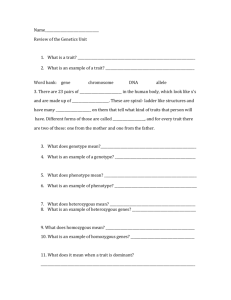

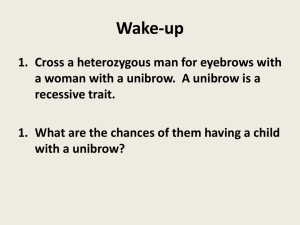
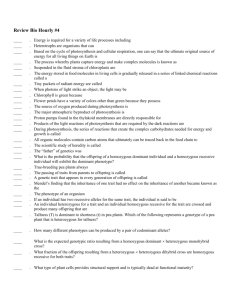

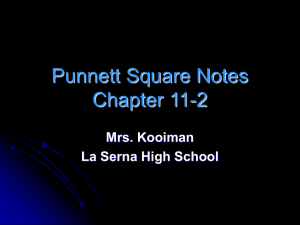

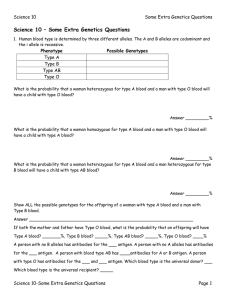
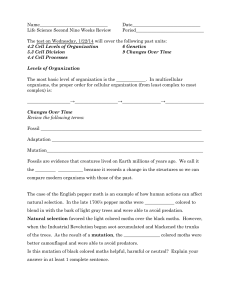
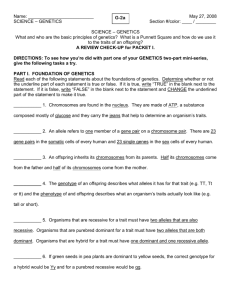
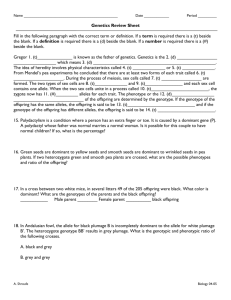
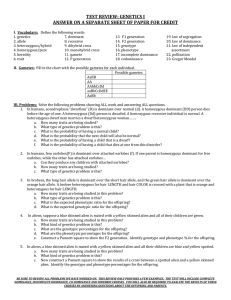
![JeopardyGeneticsReview [Recovered]](http://s2.studylib.net/store/data/010110089_1-2f93e013622a6d473951eb1c2670919e-300x300.png)
